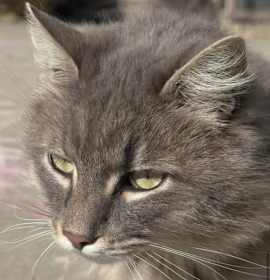Domestic Mediumhair cats come in a wide range of coat colors and patterns. Since they don’t have a specific breed standard, their coats can be almost any color, including black, white, gray, orange, cream, cinnamon, blue, fawn, lilac, and brown.
They can also have patterns like tabby, tortoiseshell, calico, solid, colorpoint, bicolor, and even more unique combinations. This diversity in their coat colors and patterns is part of what makes Domestic Mediumhairs so unique as individuals.












